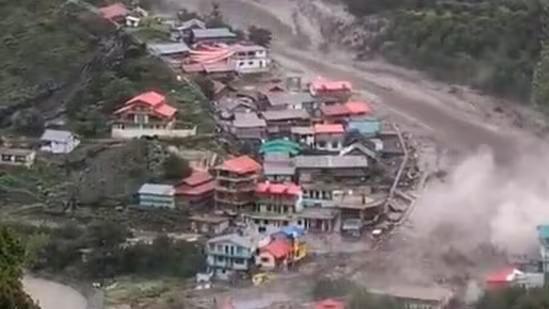
What is a Cloudburst that occurred in Uttarkhand’s Dharali?
Uttarkhand, a state in the Himalayan region of India, has been hit by a devastating cloudburst that has left a trail of destruction in its wake. The cloudburst, which occurred in the Dharali area of Uttarkashi district, has claimed the lives of at least four people and has left several others missing. The India Meteorological Department (IMD) defines a cloudburst as an intense and sudden rainfall event, typically characterized by more than 100 mm of rain within an hour. In this blog post, we will delve into the concept of a cloudburst and explore the aftermath of the recent incident in Uttarkhand.
What is a Cloudburst?
A cloudburst is a sudden and intense rainfall event that is characterized by a rapid increase in precipitation levels over a short period of time. According to the IMD, a cloudburst is typically marked by more than 100 mm of rain within an hour, although the exact definition can vary depending on the location and the intensity of the rainfall.
Cloudbursts are caused by a combination of factors, including the presence of atmospheric instability, wind patterns, and the movement of weather systems. When a cloudburst occurs, it can lead to flash flooding, landslides, and other forms of severe weather that can be destructive and even deadly.
The Dharali Cloudburst
The recent cloudburst in Dharali, Uttarkhand, is a stark reminder of the devastating impact that these weather events can have. According to reports, the cloudburst occurred on Tuesday, causing widespread destruction and chaos in the area.
The IMD reported that the cloudburst was caused by a sudden intensification of the monsoon current, which led to an increase in precipitation levels over the region. The sudden and intense rainfall caused flash flooding in the area, washing away several villages and leaving many people stranded.
Aftermath of the Cloudburst
The aftermath of the cloudburst in Dharali has been devastating. At least four people have lost their lives, and several others are reported missing. The cloudburst has also caused widespread damage to infrastructure, leaving many people without access to basic amenities such as shelter, food, and water.
The Indian Army has been deployed to the area to assist with rescue efforts, and teams of rescue workers are working tirelessly to reach those stranded in the affected areas. The government has also announced relief measures, including the provision of food, shelter, and medical assistance to those affected by the cloudburst.
Preventing Cloudbursts
While it is not possible to completely prevent cloudbursts from occurring, there are steps that can be taken to mitigate their impact. Some of the measures that can be taken include:
- Monitoring weather patterns: By monitoring weather patterns and forecasting heavy rainfall, authorities can issue warnings and take steps to evacuate people from affected areas.
- Improving infrastructure: Improving infrastructure such as drainage systems and flood protection structures can help to reduce the impact of cloudbursts.
- Promoting sustainable development: Promoting sustainable development practices can help to reduce the risk of landslides and flash flooding, which are common consequences of cloudbursts.
- Providing emergency response: Having effective emergency response plans in place can help to save lives and reduce the impact of cloudbursts.
Conclusion
The recent cloudburst in Dharali, Uttarkhand, is a stark reminder of the devastating impact that these weather events can have. By understanding what a cloudburst is and the factors that contribute to their occurrence, we can take steps to mitigate their impact and reduce the risk of loss of life and property.
It is essential for authorities to take proactive measures to monitor weather patterns, improve infrastructure, and promote sustainable development practices. Additionally, having effective emergency response plans in place can help to save lives and reduce the impact of cloudbursts.
Source:






